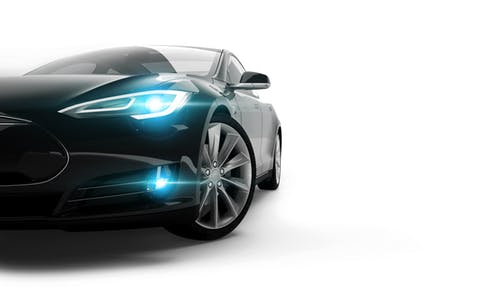In the past year, Elon Musk and Tesla have fascinated the world with new innovations like the Tesla Cybertruck. There is excitement about most new Tesla products, but one hugely important one has been largely overlooked. With far less fanfare and no stage performance by Musk, Tesla started offering car insurance last September. In the long run, this is going to have a major impact on most of our lives – perhaps even greater than Tesla’s more eye-catching innovations.
Tesla Insurance is only available for Tesla vehicles in some states of the US at present. It will expand the number of territories gradually over time. But as with the Tesla Cybertruck, the company first wants to see how the business holds up to whatever is thrown at it and whether it cracks under pressure.
For those eligible for Tesla Insurance, the company claims to offer premiums 20% to 30% lower than rivals. Yet even if you are in an area where you can request a quote, Tesla won’t necessarily make you an offer. It sometimes still refers drivers to a traditional insurance partner instead. It may be that Tesla chooses the clearer, less risky cases and sends more complex ones to insurers with more experience and appetite to handle them.
So why is Tesla selling car insurance? For one thing, it has the real-time data from all its drivers’ behaviour and the performance of its vehicle technology, including camera recordings and sensor readings, so it can estimate the risk of accidents and repair costs accurately. This reliance on data may well mean it never branches into selling insurance to drivers of other manufacturers’ cars.
At the moment, Tesla is offering insurance premiums calculated with aggregated anonymous data. In future it could roll out more customised services, like the ones offered by insurers using telematic black boxes, to offer drivers (cheaper) quotes based on how they actually drive.
Every time there is an accident, Tesla has instant access to data about the driver behaviour that led to it. One attraction for the company is that it can evaluate how some of its technologies, like autopilot, stability control, anti-theft systems and bullet-resistant steel, can reduce risk.
Another motivation for Tesla is that some insurers charge a relatively high premium for Tesla cars. One reason is that they still don’t have much historic information about the cost of repairs of electric vehicles. By vertically integrating insurance into its offering, Tesla brings down the price of owning its products.
At the same time, insurance is a barrier to many innovations that Tesla is targeting for the future. With the insurance taken care of, it will be easier to sell self-driving vehicles or send people to Mars (with sister company SpaceX). Like many things Elon Musk does, this both solves a short-term problem and fits the longer-term strategy. It’s a little like how Tesla focused on producing luxury vehicles first to finance the infrastructure for selling cheaper cars like the Tesla Model 3.
How insurance is changing
Tesla has one more reason for offering insurance, which is that the sector is changing: a tech company disrupting it fits the zeitgeist perfectly. My research at Loughborough University has looked into this disruption. I evaluated 32 insurance providers around the world including Tesla and found that artificial intelligence, big data, the internet of things, blockchain and edge computing were all rewiring insurance, both literally and metaphorically.
Broadly speaking, the work of the insurer is shifting from local human expert underwriters to automation driven by big data and AI. The existing industry players that I evaluated essentially fell into three categories. Some had recognised they cannot compete with tech companies. They were focusing on interacting with customers, branding and marketing, while outsourcing everything else to companies with the relevant skills.
Other insurers were trying to add new technologies to their existing business model. For instance, some are using chatbots that apply machine learning and natural language processing to offer live customer support. Yet another group had more fully embraced the new technological capabilities. For example, life insurers like Vitality and Bupa now encourage customers to use wearable monitoring devices to offer them guidance on improving their health and avoiding accidents.
Alongside all these were the new breed of insurers, with Tesla perhaps the best example. Others include Chinese giants Alibaba and Tencent. Just like Apple and Google are making incursions into banking and finance, these are tech-savvy companies with many existing customers who are adding insurance to their portfolio of services. In every case, the capabilities of AI and big data-driven automation have acted as a catalyst.
What it means for drivers
In the short term, Tesla drivers can look forward to insurance that is arguably more seamless and convenient and may well be cheaper – particularly if they clock up fewer miles and drive safely. (Drivers should still compare prices with other insurers: the likes of Progressive and GEICO are among those that insure Tesla vehicles.)
In the longer term, this is a sign that insurance – like banking, road tax and many services – will be driven by real-time data. It will probably change our behaviour for the better. We will probably drive slower, eat healthier food and exercise more – even if libertarians will be uneasy.
This shift will challenge our attitudes towards personal information privacy. Some of us will value the benefits of being open and transparent with our personal information, while others might seek solutions that keep their data with them. Edge computing has potential here, since it allows some data processing to be done on your device so that your personal data doesn’t need to be sent to a central server.
So Tesla and Elon Musk have not just added another revenue stream to their many successful endeavours. They are also helping to fundamentally change the way that we interact with insurance providers. In the future, insurers will be more like a partner on our journey both by car and on foot – both on Earth and beyond.



 SpaceX Begins IPO Preparations as Wall Street Banks Line Up for Advisory Roles
SpaceX Begins IPO Preparations as Wall Street Banks Line Up for Advisory Roles  Ford Takes $19.5 Billion Charge as EV Strategy Shifts Toward Hybrids
Ford Takes $19.5 Billion Charge as EV Strategy Shifts Toward Hybrids  SUPERFORTUNE Launches AI-Powered Mobile App, Expanding Beyond Web3 Into $392 Billion Metaphysics Market
SUPERFORTUNE Launches AI-Powered Mobile App, Expanding Beyond Web3 Into $392 Billion Metaphysics Market  California Jury Awards $40 Million in Johnson & Johnson Talc Cancer Lawsuit
California Jury Awards $40 Million in Johnson & Johnson Talc Cancer Lawsuit  Sanofi’s Efdoralprin Alfa Gains EMA Orphan Status for Rare Lung Disease
Sanofi’s Efdoralprin Alfa Gains EMA Orphan Status for Rare Lung Disease  Silver Spikes to $62.89 on Fed Cut – But Weekly Bearish Divergence Flashes Caution: Don’t Chase, Wait for the Dip
Silver Spikes to $62.89 on Fed Cut – But Weekly Bearish Divergence Flashes Caution: Don’t Chase, Wait for the Dip  Biren Technology Targets Hong Kong IPO to Raise $300 Million Amid China’s AI Chip Push
Biren Technology Targets Hong Kong IPO to Raise $300 Million Amid China’s AI Chip Push  EU Signals Major Shift on 2035 Combustion Engine Ban Amid Auto Industry Pressure
EU Signals Major Shift on 2035 Combustion Engine Ban Amid Auto Industry Pressure  United Airlines Tokyo-Bound Flight Returns to Dulles After Engine Failure
United Airlines Tokyo-Bound Flight Returns to Dulles After Engine Failure  CMOC to Acquire Equinox Gold’s Brazilian Mines in $1 Billion Deal to Expand Precious Metals Portfolio
CMOC to Acquire Equinox Gold’s Brazilian Mines in $1 Billion Deal to Expand Precious Metals Portfolio 
































